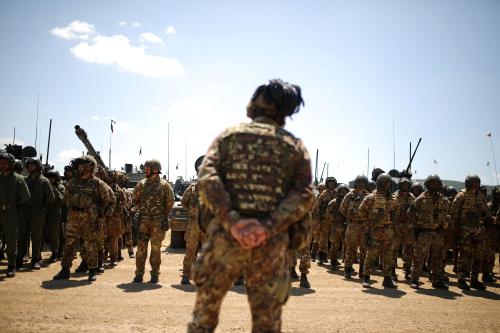During his campaign for the presidency, George W. Bush promised to “build effective missile defenses, based on the best available options, at the earliest possible date.” As president, Bush took major steps to follow through on this pledge during his first year in office. He increased spending on missile defense substantially; directed the Pentagon to explore a broader array of antimissile technologies; and, most significantly, terminated U.S. participation in the 1972 Anti-Ballistic Missile (ABM) Treaty. Bush accomplished all these tasks at a far lower political cost than anyone expected.
The horrific events of September 11 hastened, if not caused, a major shift in Russian policy toward the United States generally and toward missile defense specifically. The attack also quieted, for the time being at least, domestic critics of missile defense.
Although Bush’s commitment to proceeding with missile defense development is beyond doubt, his precise plans remain unclear. The administration has not settled on a specific missile defense architecture, and its public statements about future deployments are sketchy at best. This ambiguity is attributable not to a lack of forthrightness but rather to the immaturity of missile defense technology. President Bill Clinton’s administration had only one long-range missile defense program under development—a midcourse system designed to destroy individual warheads in space—which is far from being deployable. The Bush administration is now scrambling to turn other defensive concepts into systems it can test, an undertaking that will take years to accomplish. In the meantime, the political climate at home and abroad could change, thereby reigniting domestic and international controversies over the wisdom of missile defense.
View full article (pdf; available to Washington Quarterly subscribers only).



Commentary
Missile Defense After the ABM Treaty
June 1, 2002